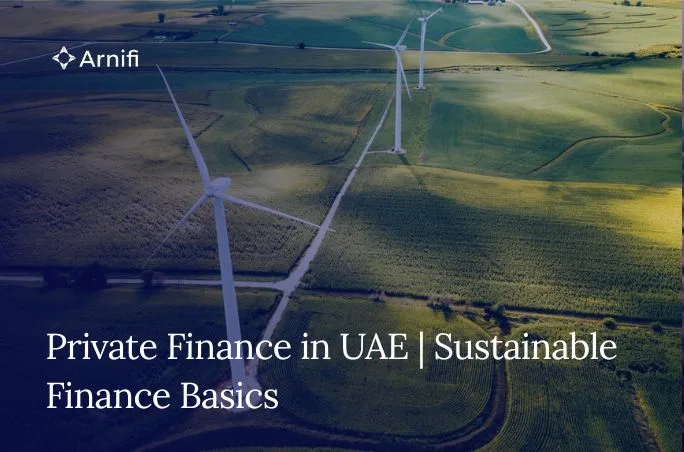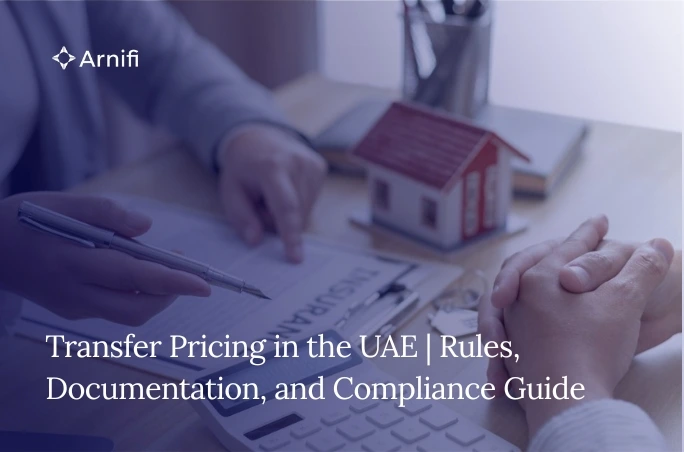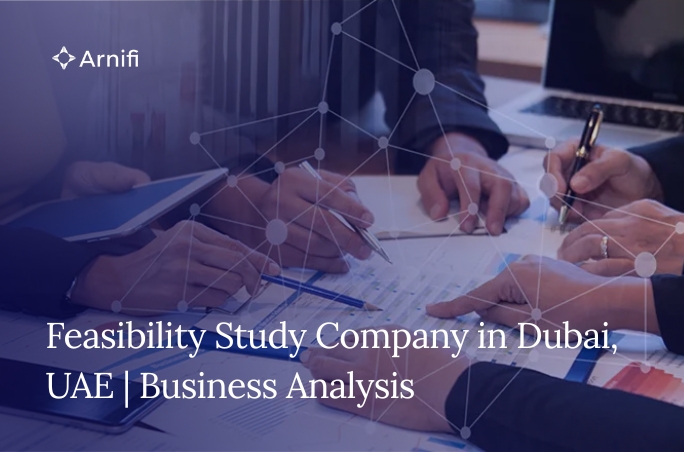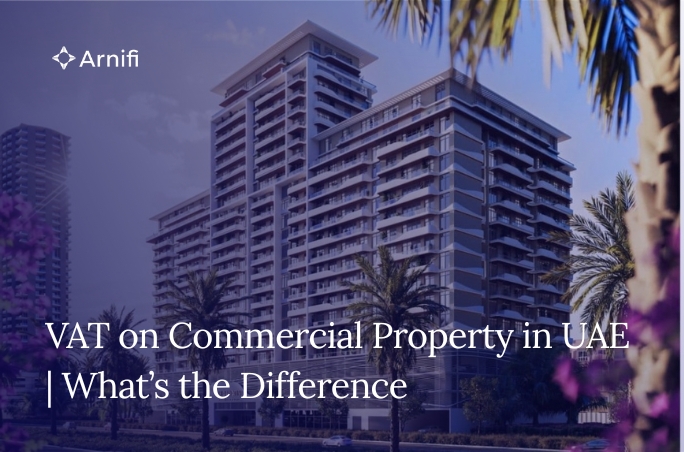Sustainable Finance in the UAE | Business Analysis
by
Ishika Bhandari
Nov 25, 2025  8 MIN READ
8 MIN READ

Table of contents
- How Private Finance Fits Into UAE Capital Markets
- Regulatory Drivers Behind Sustainable Finance
- Types of Private Finance Players in UAE
- ESG Trends Inside Private Finance Companies
- Steps to Plan Sustainable Finance Planning In UAE
- Green Bonds and Structured Products
- Challenges for Mid Market Borrowers
- Conclusion
- FAQ
Private capital in the UAE is changing shape as climate rules. Banks and funds now price risk with an eye on emissions, supply chains and social factors instead of only cash flow.
For companies that rely on private finance in UAE, this change affects loan access, pricing and reporting duties. The Central Bank and other regulators have started to bake climate risk into expectations for banks, insurers and investment firms.
It means sustainable projects now stay at the centre of the financial system than before.
How Private Finance Fits Into UAE Capital Markets
The UAE already acts as a regional hub for project finance and trade flows in Islamic capital markets. Private lenders, family offices and specialist funds sit beside large banks and sovereign investors, so companies can tap very different pockets of capital. Climate policy and the Net Zero 2050 pledge push these players to steer more money into sustainable assets and from of high emission paths.
Central Bank guidance on sustainable finance asks financial institutions to integrate climate risk into governance and risk management plus disclosure rules. This means lenders must think about transition risk when they set terms for long dated loans or revolving credit.
Those running energy intensive or resource heavy businesses can expect more questions about resilience and long term strategy during credit reviews.
Regulatory Drivers Behind Sustainable Finance
Several policies now anchor the sustainable finance agenda. The UAE Sustainable Finance Working Group has issued guiding principles that aim to align financial flows with national climate goals and the net zero target.
The Central Bank and the Securities and Commodities Authority cooperate on this work, along with exchanges that host listed issuers.
The UAE Sustainable Finance Framework for 2021-2031 sets a road map for green capital markets. It calls for better ESG data, shared taxonomies and stronger product standards. Thus, investors can trust what counts as green or social. At COP28 in Dubai, leaders supported a global climate finance framework that aims to channel more predictable and affordable capital into climate solutions.
These moves signal to private lenders that climate related lending is not a niche project but a core part of policy. In parallel, the SCA has rolled out ESG disclosure guidance for listed companies, and ADX has published detailed templates for ESG metrics.
Types of Private Finance Players in UAE
For a mid sized company or project sponsor, each source has different time horizons, security needs and disclosure expectations. Green or sustainability linked products often fit best with banks and capital market desks, while family offices can support transition plans in private deals that allow more flexible structures.
Different forms of capital matter for sustainability work.
- Banks and Islamic windows that provide loans, trade facilities and project finance.
- Capital market desks that arrange green bonds, sukuk and sustainability linked notes.
- Family offices and wealth platforms that allocate into private credit and funds.
- Development style funds that blend public and private money to crowd in capital.
ESG Trends Inside Private Finance Companies
Many private finance companies in UAE are updating risk models and product shelves. Boards want comfort that loan books can handle shocks linked to regulation, energy prices or physical climate impacts.
The Central Bank rulebook on climate risk asks financial institutions to consider such risks across governance, strategy, risk appetite and disclosures.
An individual private finance company in UAE has to set sector heat maps that show which borrowers face the highest transition pressure. It may limit exposure to new coal projects yet support renewable energy, green buildings and low carbon transport.
Capital markets reflect this shift as well. UAE green bond and sukuk issuance has surged, with official and international reports noting that UAE issuers recorded about 10.7 billion dollars of green bond sales in 2023, close to half of MENA volume, and total green bonds and sukuk out of the UAE reaching around AED 15 billion by late 2023.
This growth gives lenders and investors clearer benchmarks for pricing sustainable deals.
Steps to Plan Sustainable Finance Planning In UAE
The right sustainable finance planning in UAE starts inside the business, not at the term sheet stage.
- Map current funding mix, including bank lines, leasing, shareholder loans and capital market instruments.
- Identify environmental and social risks linked to assets, contracts and supply chain using simple heat maps.
- Select one or two metrics that matter for lenders, such as energy intensity or share of certified green buildings.
- Build a three year capex and funding plan that shows when investment will be done to improve those metrics.
This internal work makes lender conversations easier. Banks appreciate borrowers who understand their footprint and have credible plans with dates and budgets. It also reduces the risk that ESG data lives only in a sustainability report instead of the core financial model.
As lenders test ESG plans against hard numbers, Arnifi’s accounting and bookkeeping services keep UAE ledgers clean and traceable. That gives banks confidence that sustainability metrics link back to audited books.
Green Bonds and Structured Products
The UAE has emerged as a regional leader in green bonds and sukuk. Local issuers recorded roughly 10.7 billion dollars in green bond sales in 2023, around 45 percent of total MENA green bond volume that year.
Green and sustainability sukuk linked to UAE entities have also grown, and S&P data shows UAE issuers accounting for a large share of global sustainable sukuk activity in 2023. These metrics allow governments, banks and corporates to raise money for eligible green projects while giving investors labelled exposure.
For private borrowers, the message is clear. Capital markets will back strong projects with credible use of proceeds and reporting, but weak labelling or vague promises face greater pricing pressure and reputational risk.
Challenges for Mid Market Borrowers
Much of the policy and issuance work sits at sovereign and large corporate level. Mid market firms and family groups face their own challenges.
- Limited internal ESG skills, so finance teams struggle to translate climate risk into numbers.
- Fragmented data, because energy use, fleet details and HR metrics sit in separate systems.
- Unclear payback periods on efficiency projects, which makes capex approvals slow.
- Concern that lenders might demand complex reports that feel heavy for a mid sized operation.
These hurdles are real, yet they do not block progress. Many lenders now offer simple checklists, case studies and templates. Advisory firms and auditors can help build basic KPIs and controls, which makes the first sustainable loan or bond feel manageable instead of overwhelming.
Conclusion
Sustainable finance in the UAE now shapes how lenders judge credit, how investors allocate capital and how boards think about risk.
Arnifi’s accounting and bookkeeping services in UAE helps companies align daily records with ESG and climate goals. This way, a sustainable finance strategy stays inside the general ledger instead of a separate report.
Companies that rely on private funding should treat ESG and climate questions as part of core finance strategy, not as a separate compliance file, so they can access deeper pools of capital on better terms as the market matures.
FAQ
Q1: What does private finance in UAE mean for companies seeking capital?
Private finance in UAE links bank loans and alternative capital with growth and climate goals. It shapes pricing and reporting as regulators push lenders toward better balance sheets for borrowers.
Q2: Who are the main private finance companies in the UAE?
Finance companies include banks and Islamic windows plus family offices. Each source has risk appetite and disclosure needs, so borrowers match project structure with a suitable provider.
Q3: What documents do private finance companies in UAE usually ask for?
Most private finance companies in UAE request trade licence, shareholder IDs, bank statements, management accounts, loan purpose note and basic projections before pricing terms or moving to detailed due diligence.
Q4: How does corporate finance in UAE support sustainable projects?
Corporate finance connects bank facilities with capital market deals that use ESG metrics. Strong sustainable projects gain better access to credit than high emission models that face scrutiny.
Q5: Why start sustainable finance planning in UAE before seeking funding?
Early sustainable finance planning in UAE aligns capex and funding structure with ESG targets. Maps of risks and metrics make lender discussions smoother and reduce surprises during documentation or monitoring.
Top UAE Packages

Related Articles
Top UAE Packages



